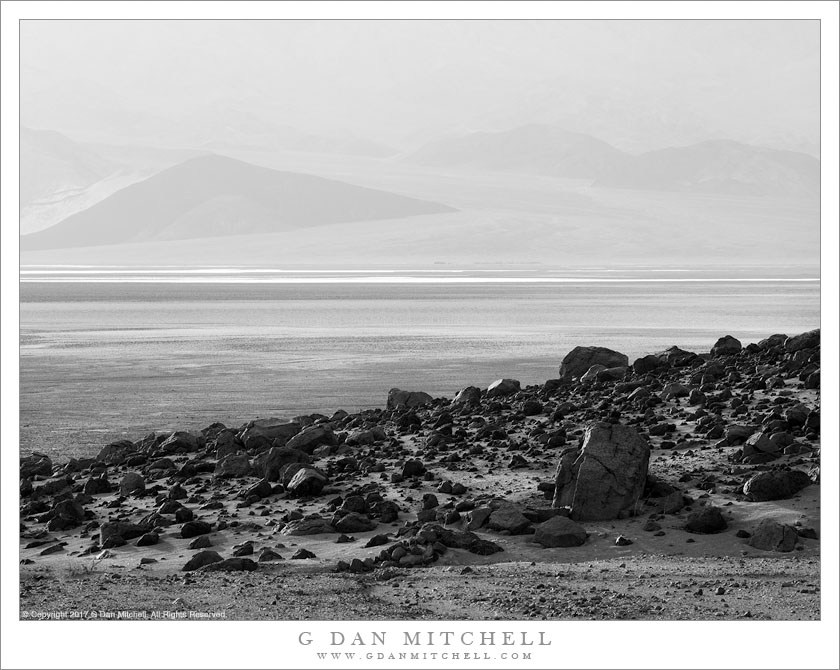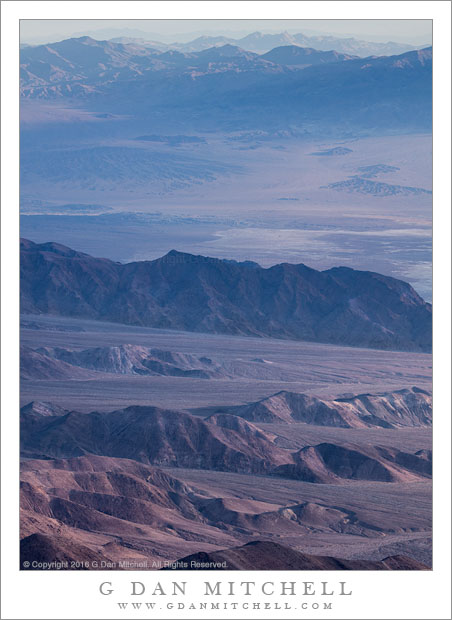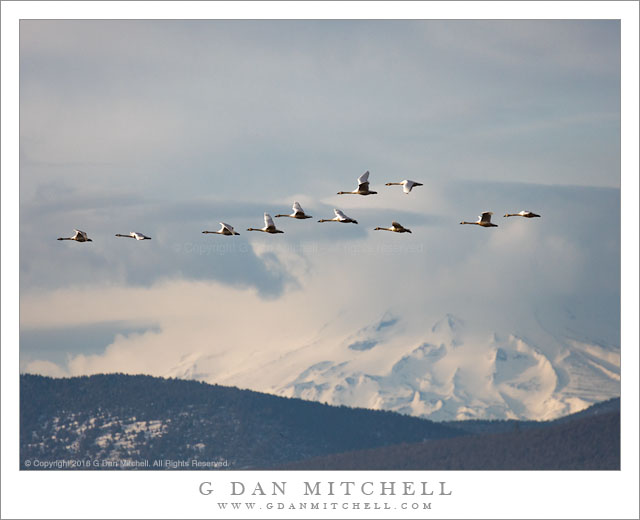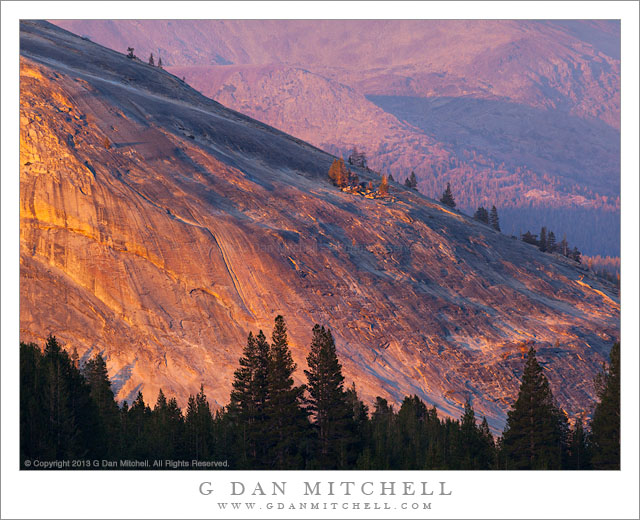
Rock-Covered Hill, Desert Haze. Death Valley National Park, California. April 5, 2017. © Copyright 2017 G Dan Mitchell – all rights reserved.
A small hill covered with rocks, the salt flats, and distant mountains, Death Valley National Park
I distinctly recall my somewhat unusual first view of Death Valley. It was perhaps about twenty years ago. My oldest son was in a school “hiking and biking” club, and their annual “Big Trip” was to be an adventure in Death Valley involving hiking, backpacking, and more. Most of the group traveled to the park on a small bus, though I joined a group of parent chaperones and the club adviser/teacher in an old Chevy Suburban, highly modified and loaded down with backpacks and other gear for more than thirty people. We drove all day and entered the park after sunset. Because it was late we stopped at the first available camp ground, the Emigrant campground along highway 190 partway down the route below Towne Pass. We set up camp in complete darkness, unaware of our surroundings, in a landscape that I had never before seen.
Early in the morning, perhaps shortly after dawn, I crawled out of my tent and in this light saw the immense light-filled space of this great Valley for the first time, a view that extended down the gigantic fan on which we were camped, the distant valley floor thousands of feet below, and the rugged mountains on the far side of the valley. I had never seen a raw landscape like this before, with no visible plant life and its geology laid bare — a place of rock, sand, haze, juxtaposed shapes, textures, often-subtle colors, and huge distances. There is, I think, a bit of that in this photograph, which includes a dark, rocky hill that I have looked at many times, its ridge sloping the opposite direction from the distant dark hills across the valley, barely visible through the opaque atmosphere.
 G Dan Mitchell is a California photographer and visual opportunist. His book, “California’s Fall Color: A Photographer’s Guide to Autumn in the Sierra” is available from Heyday Books and Amazon.
G Dan Mitchell is a California photographer and visual opportunist. His book, “California’s Fall Color: A Photographer’s Guide to Autumn in the Sierra” is available from Heyday Books and Amazon.
Blog | About | Flickr | Twitter | Facebook | Google+ | LinkedIn | Email
All media © Copyright G Dan Mitchell and others as indicated. Any use requires advance permission from G Dan Mitchell.



